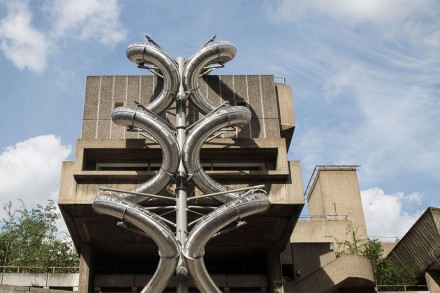
Carsten Höller, Isometric Slides (2015), all images via Hayward Gallery
Outside London’s Hayward Gallery at the Southbank Centre, a massive pair of slides have sprouted out from the building’s walls, spiraling away and towards each other in a mirrored, descent towards the ground. The playful, immense structure marks the presence of Carsten Höller, the Belgian artist who is currently presenting a career retrospective within the gallery walls.
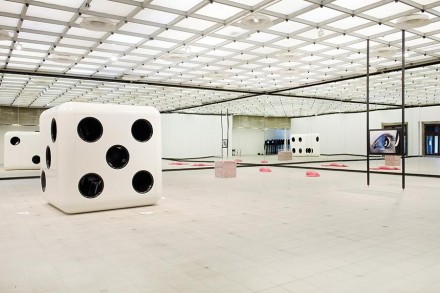
Carsten Höller, Decision (Installation View)
Over the course of the artist’s 20-year career, Höller has consistently played with devices and elements of contemporary culture, the natural environment and industrial processes that mediate psychological and physical experience, from his large-scale sculptures of toys, playful objects and games, to the aforementioned slides that send the viewer careening down from the top of the exhibition space. His is a particular brand of the “relational aesthetics” that served as the buzzword for a particular brand of performative, often sculptural work at near end of the 20th century and early 21st Century, an experiential practice that seems primarily interested in the gallery or museum as a site of perceptual inversion rather than political or social transformation.
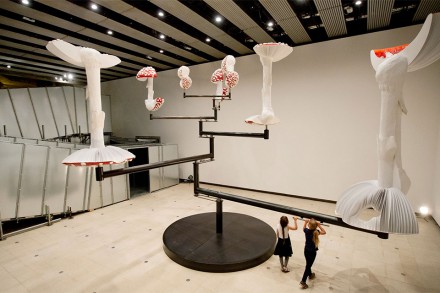
Carsten Höller, Flying Mushrooms (2015)
Höller seems fascinated with the possibility to bend experience, but also to use the language of 20th century conceptualism and the art historical to shape the work’s final form. From his mirrored visors (owing much to the work of Lygia Clark), to his immense die (á la Tony Smith) that viewers are allowed to crawl through (a cunning inversion of Smith’s original work, which was supposedly based on the proportions of the human body). Höller seems to understand the points of slippage between the experiential and the raw object, and then pushes for a breakdown of hard barriers between the two, turning his works into sites of physical contact and encounter. That their final presentation feels so playful seems to mirror his own coy take on art history itself.
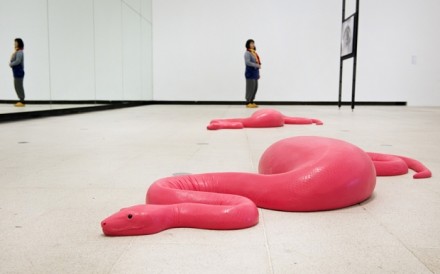
Carsten Höller, Decision (Installation View)
Accordingly, the exhibition title, Decision, seems to offer a second layer in the context of Höller’s witty takes on the Western canon, as if he challenges the viewer in their own treatment of the work. As much as the pieces on view serve as a decision whether or not to engage with them as an object, the parallel option seems to be an engagement with the work as an art object proper. Over 15 years after the experiential impetus of “relational” art has become something of an accepted practice, the act of returning Höller’s work to the primary role of object seems to be as much an active choice.
Decision is on view through September 6th.
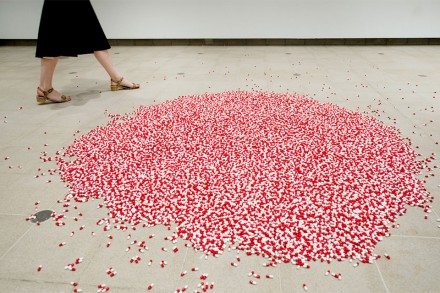
Carsten Höller, Pill Clock (2011)
— D. Creahan
Read more:
Carsten Höller: Decision [Hayward Gallery]
“Carsten Holler’s giant slides return to London” [BBC]
“Carsten Höller: Decision” [The Guardian]
“Carsten Höller transforms London’s South Bank into a playground” [Dezeen]
“Carsten Höller, Hayward Gallery” [The Telegraph]



